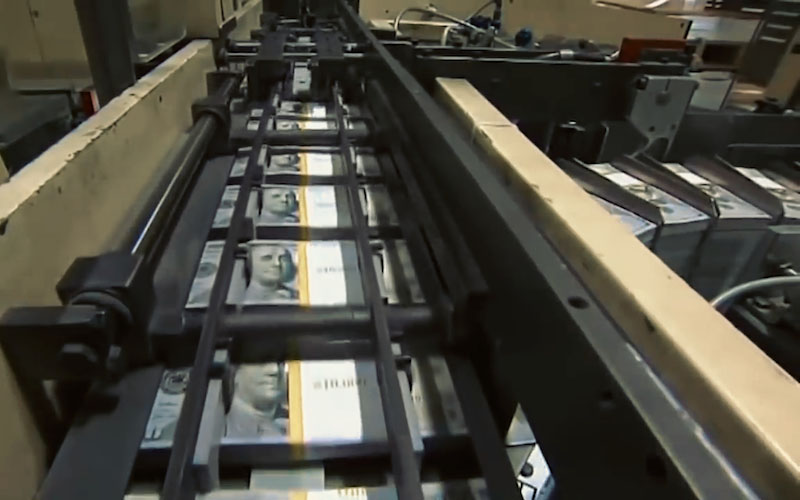US PPI unexpectedly fell in August, easing inflationary pressures paved the way for the Fed to cut interest rates
2025-09-11 01:52:07

PPI unexpectedly fell, and inflationary pressure eased
The Producer Price Index (PPI) fell 0.1% in August, below market expectations for a 0.3% increase, indicating a significant easing of price pressures at the wholesale level. This marks the third time since 2025 that the PPI has recorded negative growth, suggesting that inflationary pressures at the front end of the supply chain are fading. The core PPI (excluding food and energy) also fell 0.1%, but the core PPI, excluding trade services, rose 0.3%, reflecting the mixed nature of inflation signals. CNBC noted that prices in the service sector (which accounts for approximately 80% of US GDP) fell 0.2%, while commodity prices rose only slightly by 0.1%, suggesting that businesses may have absorbed some of the cost pressures by compressing margins.
"The worst-case inflation scenario didn't materialize, with the year-on-year figure falling back below 3%, which is good news for the 'dovish' supporters of rate cuts," said David Russell, global head of market strategy at TradeStation.
Some analysts believe that the moderate performance of PPI may reflect the adjustment of the global supply chain and the response of enterprises to the Trump administration's tariff policy, which has suppressed price increases in the short term.
Service and commodity prices diverge, and tariff impacts begin to emerge
The PPI report showed a 0.2% decline in service prices, primarily driven by narrowing profit margins at retailers and wholesalers. This may be related to businesses' response to the Trump administration's recent tariff increases. In contrast, commodity prices rose only 0.1%, indicating that the direct impact of the tariffs has not yet been fully passed through. While businesses may have temporarily absorbed the cost of tariffs by reducing profit margins, the sustainability of this strategy is questionable.
Since the beginning of 2025, the Trump administration has imposed tariffs ranging from 10% to 25% on some imported goods. This is intended to protect the US manufacturing industry, but it has also raised concerns about rising inflation. Although the PPI data does not yet show significant inflationary pressure, the cost of these tariffs may gradually be passed on to consumers in the coming months, pushing up retail prices.
Market reaction is cautious, focus turns to CPI
Despite the mild PPI data, the market reaction was relatively calm. US stocks rose slightly on September 10th, with the S&P 500 index edging up 0.2% and the Dow Jones Industrial Average rising approximately 100 points. The 10-year US Treasury yield fell slightly to 3.65%. The PPI is not a widely watched or easily understood indicator, so investors are more inclined to await the CPI data, due at 8:30 AM on September 11th. Market expectations are for a 0.3% monthly increase in the CPI, bringing the annual increase to 2.9% from 2.7% in July.
Chris Larkin, managing director of trading and investing at Morgan Stanley E-Trade, said: "Tomorrow's CPI data will be more important, but today's PPI data almost paves the way for the Fed to cut interest rates next week. However, the market has already expected the start of a rate cut cycle, so the short-term impact may be limited."
“If slower economic growth and weak demand persist, inflation is likely to remain subdued,” said economist Chris Rupkey.
Expectations of a Fed rate cut rise as Trump puts pressure
The unexpected decline in PPI provides the Federal Reserve with a basis to support a rate cut at its September 17 interest rate decision.
"The PPI data and its impact on core PCE (the Fed's preferred inflation measure) suggest there's no reason to prevent the Fed from cutting rates by a quarter point in September and possibly further cuts at subsequent meetings," said Andrew Hollenhorst, an economist at Citigroup.
According to the Chicago Mercantile Exchange's (CME) FedWatch tool, the market is pricing in an 85% probability of a 25 basis point rate cut in September and a 15% chance of a 50 basis point cut.
Trump quickly posted on Truth Social after the data was released, declaring "Zero Inflation!" and criticizing Federal Reserve Chairman Powell for "having no clue" and urging an immediate and substantial interest rate cut.
The long-term game between inflation and tariffs
Despite the mild PPI reading, analysts warn that the Trump administration's tariff policy could push inflation higher in the future. Businesses have limited capacity to absorb costs, and the impact of tariffs could gradually filter through to consumers, pushing up both the CPI and PCE indices. Oxford Economics predicts that if tariffs are expanded, US inflation could rise above 3.5% by 2026.
With approximately 80% of its components influencing the Federal Reserve's preferred personal consumption expenditures (PCE) price index, the CPI will become a more crucial data point in determining inflation trends and Fed policy. Recent weak employment data (August non-farm payrolls added 142,000 fewer than expected) combined with the moderate performance of the PPI further bolster the case for the Fed to initiate an easing cycle. However, the pace and magnitude of interest rate cuts remain dependent on the performance of inflation and economic data in the coming months.
- Risk Warning and Disclaimer
- The market involves risk, and trading may not be suitable for all investors. This article is for reference only and does not constitute personal investment advice, nor does it take into account certain users’ specific investment objectives, financial situation, or other needs. Any investment decisions made based on this information are at your own risk.





















